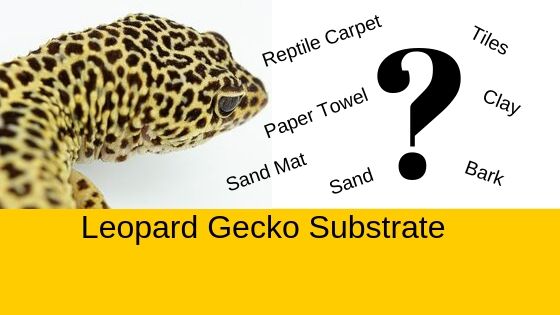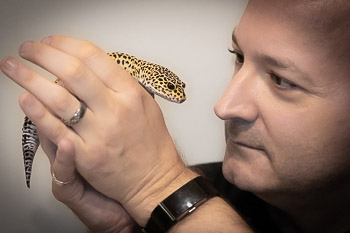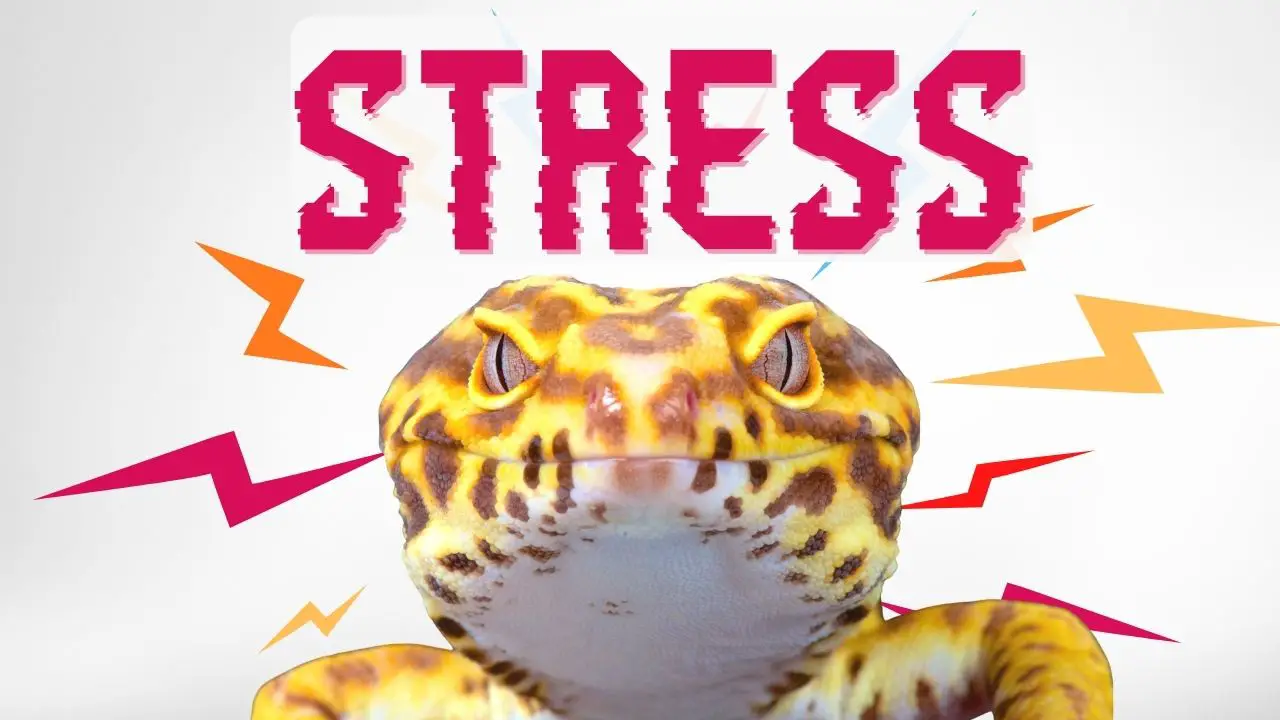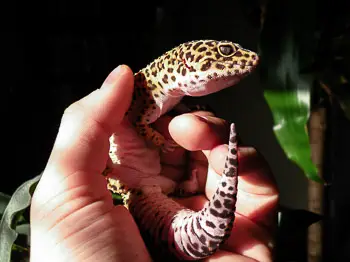When setting up your leopard gecko habitat, there are plenty of substrate options. Substrate is the material you use to cover the floor of your pet’s tank or enclosure. It’s the first thing you’ll put in your tank, it’s what you’ll set your tank décor on, and ultimately it’s what your leopard gecko will crawl around and sleep on. There are many types of substrate available, and reptile owners have strong opinions on what is the best leopard gecko bedding, as well as what substrates shouldn’t be used.
What kind of bedding or substrate should you put in your habitat? Let’s take a look at some of the most common choices of leopard gecko bedding:
Paper or Paper Towel
Paper and paper towels are readily available and inexpensive. Since you can easily see when your gecko has made a mess, cleanup becomes quick and easy. Paper towels are easy and cheap to replace, and makes an easy and convenient starter bedding for hatchlings or a tank for quarantine if you’re isolating a sick gecko.
It’s a simple and effective leopard gecko substrate solution but c’mon: You can do better. Your gecko deserves better.
Sand
Sand, and other loose substrates (e.g. coconut fibers, walnut shells, wood shavings, bark etc.) are generally not recommended as a substrate for leopard geckos. Since leopard geckos originate from desert regions, common thought is that desert equals sand, and therefore sand is part of the leopard gecko’s natural environment. This is not true.
The desert regions inhabited by wild leopard geckos are dry rocky crags or arid grasslands where the soil is hard and compacted like dry clay. To best mimic a gecko’s ‘natural’ habitat, a better choice would be stone tiles, or some clay like products.
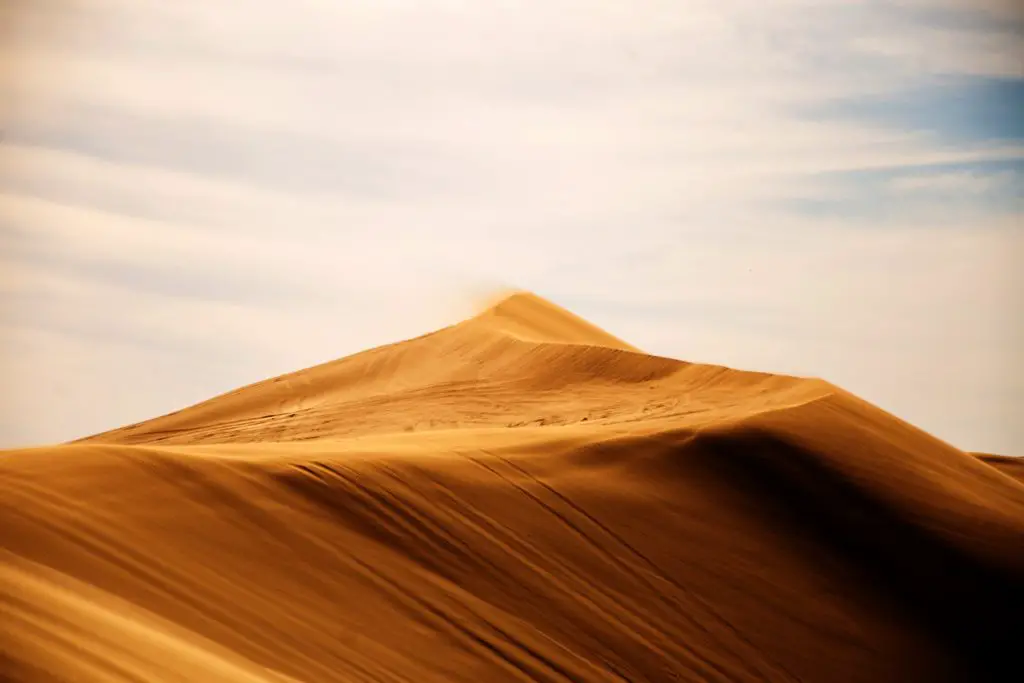
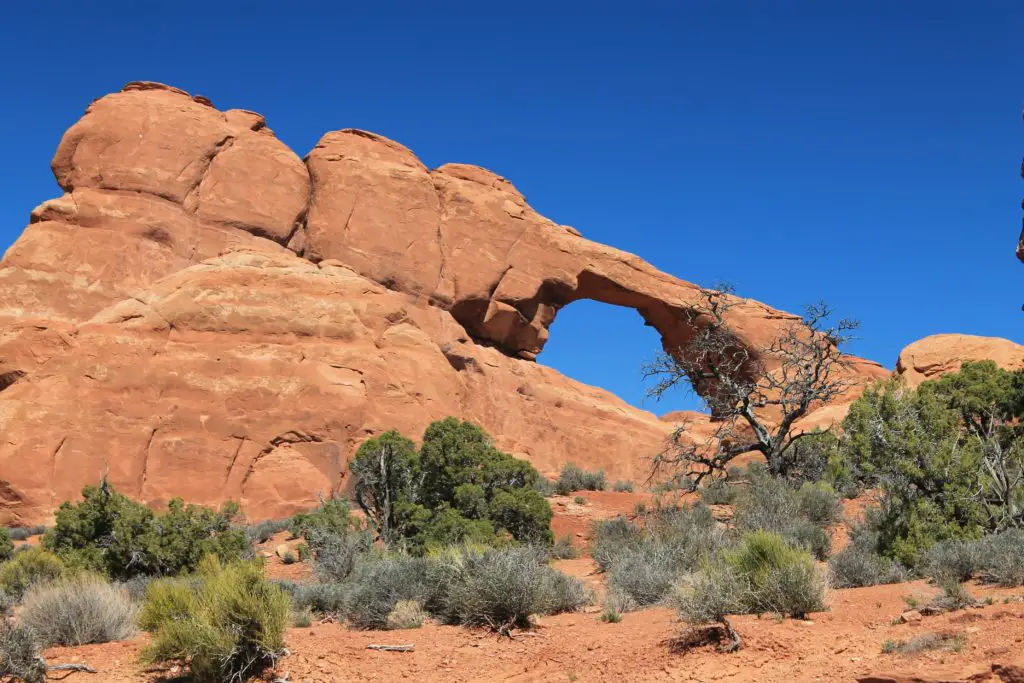
Natural habitat aside, the main reason to avoid sand is about your gecko’s health and safety, especially for younger geckos.
Have you ever watched your gecko lunge for a cricket and miss? If the cricket was on sand, your gecko probably just got a grainy mouthful. Yuck. Have you noticed your gecko flicking it’s tongue and licking just about everything? Your leopard gecko’s tongue is a sensory organ, and it flicks and licks to explore its environment, sometimes including the ground.
If your gecko ingests sand, the sand may become stuck in your gecko’s digestive system. This is called impaction, and is one of the most common causes of illness in leopard geckos (read more about impaction in this post.) Leopard geckos cannot digest sand, and if sand blocks your gecko’s intestines it could be fatal.
Calcium Sand
Nope. Just no. Calcium sand is a type of substrate often recommended by some of the large chain pet stores. Yes, your leopard gecko does need calcium in its diet , but should not meet that requirement by eating sand. The sand is still not digestible, and is a risk of impaction.
Your leopard gecko should be offered a calcium supplement, not sand, to meet its needs.
Tile
Ceramic tiles can look good and can mimic the natural rocky terrain leopard geckos would encounter in their natural habitat. Tile can hold and transfer the heat well if you are using an under the tank heater.
If the bottom of your tank is glass, you’ll want a layer of paper or padding between the glass and tile as to not scratch or break the glass. Some reptile enthusiasts that choose tile as a substrate glue or fix the tiles permanently to the bottom of the tank.
Reptile Carpet
Reptile carpet is specially made for pet reptiles. It is soft and safe and usually comes in green and brown colors. Reptile carpet is reusable and washable. If you have two carpets, you can have one in the enclosure and one ready to replace it with when it’s time to wash it and clean the tank. It comes in a variety of sizes, and you can easily cut it to a size that fits your enclosure.

Reptile Carpet rolls out like a thin cloth or pad, and effectively transfers heat from an under the tank heater or heat pad.
Some reptile keepers express concern that a leopard gecko’s claws may become stuck or snagged in the carpet. This may be more of a risk for hatchlings, but not so much after a few months. You can start your hatchlings on paper towels, and graduate them to reptile carpet when they (and more importantly – their claws) are a bit larger.
Reptile carpet is what we use here at the Leopard Gecko Habitat, and we’ve not had an issue with this with over a decade of experience.
Sand Mats
There are also carpet like ‘sand mats’ available. If you must have the desert sand look, these are much better and safer than using actual sand.

Reptile sand mats have a rough texture and are more coarse compared to reptile carpet.
They’re not quite as easy to clean as the reptile carpet, but could be a good alternative.
Clay
Some vendors sell clay kits that you can shape and let harden. These look look great, are customizable, and solid when constructed properly.

The only thing that gives me pause about using hardening clay for a leopard gecko is usage with an under the tank heater is not recommended. Leopard geckos absorb most of their heat through their bellies, and the clay does not transfer the heat well. Instead, it insulates the tank and traps most of the heat underneath.
It may be a great choice for lizards that bask and get most of their heat from overhead UV lighting. I’d love to try this, but don’t feel it’s a great fit for a leopard gecko.
Wrap Up: Leopard Gecko Bedding and Substrate
There are a number of factors in play when considering the best leopard gecko bedding. Ease of use and cleaning, aesthetics, and safety are key factors. You’ll want an attractive substrate that is low maintenance, looks cool, and – above all – is safe for your gecko.
Most importantly – avoid loose substrate like coconut husks or sand due to the risk of ingestion and danger of impaction.

